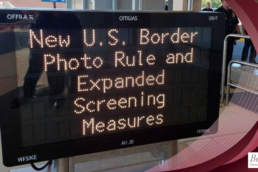USCIS recently announced layoffs at the Vermont Service Center (VSC), sparking concerns about potential delays and disruptions in immigration processing. These layoffs are part of a broader effort by USCIS to automate processes and reduce reliance on a primarily contractor-based workforce. Similar cuts have already impacted operations at the California Service Center (CSC) and Nebraska Service Center (NSC) earlier this year, raising questions about what applicants and petitioners can expect moving forward.
The VSC is a critical hub for processing various types of immigration petitions, including employment-based visas, family-based cases, and humanitarian applications like those filed under the Violence Against Women Act (VAWA) and U Visa applications for victims of crime. It relies heavily on contractors to handle administrative tasks like data entry and case intake. With contractor positions being phased out, the center faces significant operational shifts, which may ripple across its caseload.
Potential Impacts on Cases Filed at Vermont Service Center
Based on trends observed following layoffs at CSC and NSC, petitioners and applicants should be prepared for the following:
- Processing Delays: Layoffs often result in a backlog as USCIS reallocates remaining resources to high-priority cases. Non-urgent petitions may face longer adjudication times.
- Increased Error Rates: With fewer human staff handling case intake and data entry, there is a higher risk of clerical errors, especially as new automated systems are rolled out.
- Transfer of Cases to Other Service Centers: Cases may be redirected to less burdened facilities, such as the Texas Service Center (TSC), potentially resulting in uneven processing times and delays in communication.
- Disruption in Specialized Case Handling: VSC has particular expertise in certain case types, such as VAWA petitions and U visa applications. Workforce reductions could dilute this specialized knowledge.
- Prolonged Responses to RFEs and Appeals: Reduced staffing might slow down the response time for Requests for Evidence (RFEs) and motions to reopen or reconsider.
What This Means for Employers, Applicants, and Petitioners
The operational changes at the Vermont Service Center underscore the importance of preparing robust and well-documented filings. Employers and applicants should anticipate longer processing times and review receipt notices for errors or unusual delays.
To navigate potential disruptions at the Vermont Service Center, regularly monitor USCIS case updates and file e-requests if processing times exceed normal limits. Plan proactively by filing cases early to mitigate delays caused by backlogs. Stay informed about the possibility of cases being transferred to other service centers, which could impact processing times. Finally, collaborate with an experienced immigration attorney to ensure filings are accurate and well-prepared, reducing the likelihood of errors or delays and effectively responding to RFEs or other issues.
While USCIS’s automation efforts will purportedly lead to efficiencies in the long term, the short-term impacts are creating uncertainties for petitioners and applicants. Our firm will continue to monitor these developments and provide updates as the situation evolves. If you have concerns about how these changes might impact your case, contact us today.
Ready to have Berardi on your side?
Whether you’re a business looking to hire or a professional hoping to relocate, immigration law can be complicated. But you don’t have to do it alone. Put our experience to work for you.



